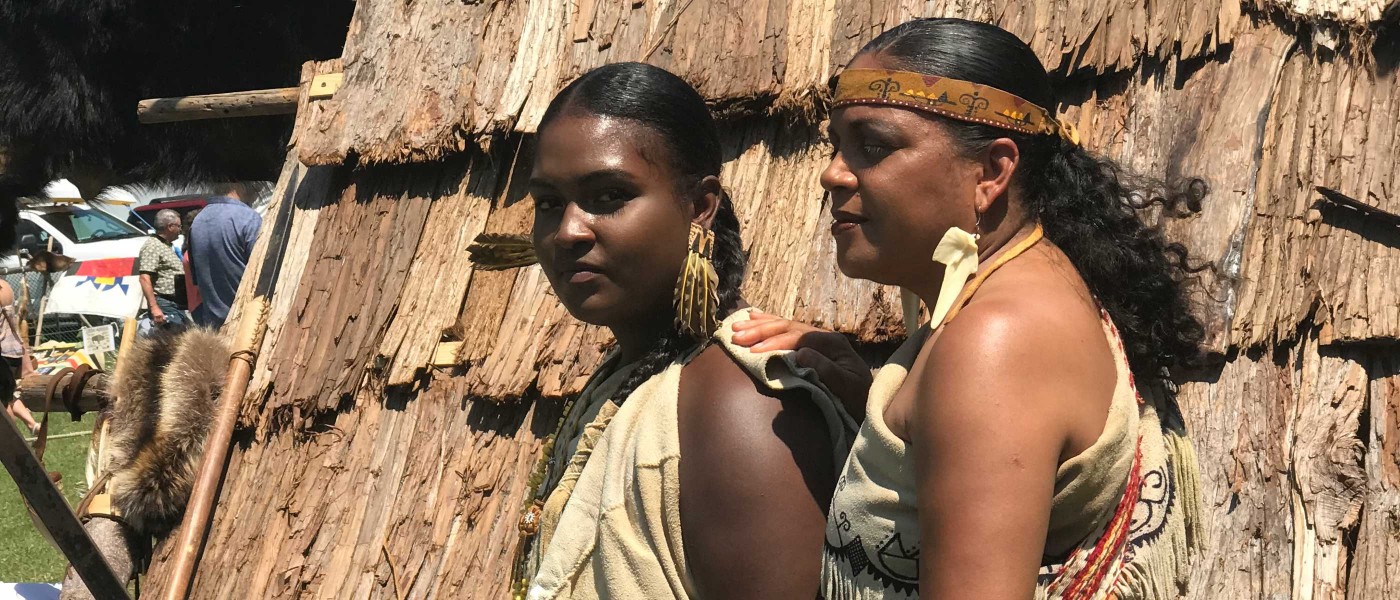Ohkehteau (Plants of the Earth): A Shinnecock Oral History - Tulip Poplar
Tulip Tree (Liriodendron tulipifera)
Native Flora Garden, Parking Lot Hill/Overlook
Running time 3:07
The tulip poplar tree is used for many different types of purposes. For example, our ancestors used the bark from the tulip poplar for covering our winter homes. In the springtime, when the sap begins to run on the trees, that is when it is time to peel the bark off the tulip poplar. We use this technique that makes the bark come off almost like a sheet. Those bark sheets are then flattened out and used to cover our winter homes, keeping the snow out and the heat in. Tulip poplar is actually the most popular tree for canoe making. The Shinnecock word for canoe is mishoon, just like my name, Sagkompanau Mishoon Netooeusqua. The tulip poplar is considered one of the tallest native hardwood trees and is one of our mishoon-making trees. The trees grow so tall that they do not branch off until at least 60 feet or more, making it very practical for crafting large mishoons, also known as dugout canoes. To prepare the poplar trees for canoe-making, you take clay from the river, or riverbanks, where there’s natural clay, and you put the clay around the very bottom of the tree. And you leave 12 to 24 inches in between the next layer where you put the clay, and then you start a fire, a very controlled fire, in between where the clay is. And by scraping and chipping away at the area where there’s fire, you begin to weaken the tree and the tree eventually falls. As a matter of fact, this is how we fell all of our trees. We didn’t use traditional saws or metals because it takes a very, very long time to fall a tree, but you’re also harming the tree. Once the tree comes down, there is a fire that’s placed underneath the log and there’s a fire that’s placed to the top of the log. The same exact technique of scraping and chipping away at where the fire is is used until the mishoon is complete. And this takes between five to ten people to do, because you have to do it in shifts. The fire is never put out and it goes for almost a week long. The skill of producing these mishoons with the fire is a fading art. Laws against our way of living have been in existence since the 1600s and it’s suppressed this practice. The resurgence of our canoe culture is something that I have been dedicating my entire life to, from paddling to making mishoons and to putting these mishoons back onto our ancestral highways, such as the Long Island Sound, the Hudson River, the Atlantic Ocean, the Boston Harbor, and the Thames River in Connecticut.
Plants of the Earth
Ohkehteau (Plants of the Earth): A Shinnecock Oral History highlights native plants around Brooklyn Botanic Garden and the ways that Indigenous peoples use and know them. On your self-guided tour, hear Chenae Bullock tell stories passed down to her and describe traditional uses for plants, including medicines that have been used for thousands of years
“It’s hard to protect what you cannot recognize. This tour was made with good intent to share the value of the plants and in turn, protect our Earth.” —Chenae Bullock
-
Chenae Bullock is an enrolled Shinnecock Indian Nation tribal member and a descendant of the Montauk Tribe in Long Island, New York. Chenae is a community leader, water protector, cultural preservationist, Indigenous perspective historian, and humanitarian and has worked at many accredited Indigenous museums. She is the author of 50 Plant Medicines: Indigenous Oral History and Perspective, on which this exhibit is based.


